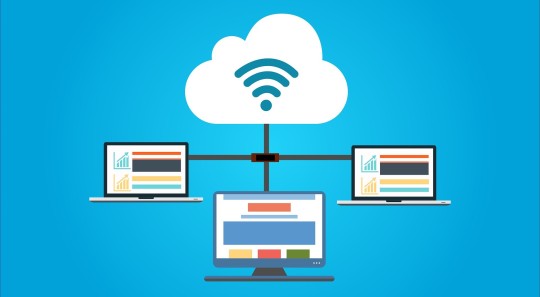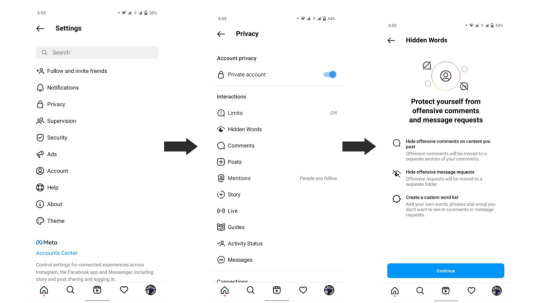Text
Everything about ‘Edge computing’
Edge Computing, changing the future of technology.

A distributed computing paradigm called “Edge Computing” brings computation and data storage closer to the data sources. This should reduce bandwidth usage and speed up response times.
It is not a particular technology, but an architecture.
The number of IoT devices growing at the network’s edge is producing a ton of data, and using and storing it all in cloud data centers strains the network’s bandwidth.
Although this is frequently a crucial need for many applications, data centers are unable to ensure adequate transfer speeds and reaction times.
By utilizing smart objects, mobile devices, or network gateways to carry out tasks and offer services on behalf of the cloud, edge computing aims to shift computation from data centers closer to the edge of the network.
Benefits of Edge Computing:
Privacy and Security
Data may move between several distributed nodes connected by the Internet in edge computing, necessitating specialized encryption techniques independent of the cloud.
Edge nodes could also be limited by resources.
It is necessary to move away from centralized top-down infrastructure and toward a decentralized trust paradigm.
By limiting the transmission of sensitive data to the cloud, privacy can be improved.
2. Efficiency
Complex analytical tools and Artificial Intelligence tools can operate on the system’s edge, since the analytical resources are close to the end users.
The following example shows how efficiency gains are produced by using edge computing as a transitional stage between client devices and the larger internet
Video files must be processed computationally intensively on external servers for a client device. The video files only need to be sent over the local network by using servers on a local edge network to carry out those calculations.
3. Scalability
Different problems with scalability in a dispersed network must be addressed.
Having differing performance and energy limits, a highly dynamic environment, and connection dependability compared to cloud data centers’ more stable architecture.
The most recent scheduling method scales the edge server with the least amount of edge resources necessary for each activity that is offloaded, while increasing the efficiency of using edge resources.
4. Speed
Edge computing can improve an application’s responsiveness and throughput by bringing analytical processing capabilities near to the end users.
A well-built edge platform would perform far better than a conventional cloud-based solution. Edge computing is a far more practical choice than cloud computing for applications that require quick responses.
In applications like augmented reality, where the headset should ideally detect who a person is at the same time as the wearer does, edge computing is more likely to be able to replicate the same perceptive speed as humans.
5. Reliability
To maintain a service, failover management is essential. Users should be able to access a service without interruptions even if a single node goes down and is unreachable.
Systems for edge computing must offer steps to recover from a failure and notify the user of the incident. For error detection and recovery to be practical, each device must maintain the network topology of the entire distributed system.
For instance, an edge computing device like a voice assistant could keep serving local users in the event of cloud service or internet outages.
Thanks!
0 notes
Text
Top 5 Billionaires using ‘Data Science’

Billionaires using Data Science in their businesses.
Big data and big money go together. It is mostly due to their investments in big data technologies and applications that an increasing number of tech giants have made it onto the list.
These are the top 5 Billionaires that data science give over the past ten years.
1. Reed Hastings

Who hasn’t heard of Netflix? Netflix has been everyone’s preferred source for movies, web-series, and television shows as it removed the need for you to rely on reliable friends or other media for the same.
Reed Hastings became a billionaire in the shortest amount of time after founding Netflix. The meticulous monitoring and analysis of your unique viewing patterns by Reed’s business worked like magic!
2. Kevin Systrom

Instagram, Systrom’s innovation, grabbed news for its success, earning him a spot on the list. When Facebook acquired the business in 2012, this photo-sharing service was crowned as the preferred option in the social media sphere.
Kevin’s increasing wealth is a sufficient justification for his inclusion on the list of top billionaires in the data industry.
3. Travis Kalanick

Travis Kalanick formerly worked for Uber, but left after a string of controversies. Uber has completely changed how short-distance rides are hailed and hired.
The data scientists who created the systems and algorithms to assess and forecast demand and dynamically set trip prices are to thank for Uber’s quick rise to success. Travis earned a sizable sum of money while working in the data industry with Uber, making him a millionaire in the process.
4. Peng Lei
In China, Amazon is not well-known. Thanks to Alibaba, which is China’s direct e-commerce rival to Amazon. One such billionaire that the company has produced is Lucy Peng.
She currently serves as executive chair at AliPay, the biggest mobile and online payment network in the world, and has a strong enthusiasm for data.
5. Patrick Collison
Leveraging big data to make online payment processing secure and economical was Patrick Collison’s crystal-clear proposal. This resulted in the creation of Stripe, a business that uses automation and machine learning-based fraud detection to detect dubious transactions before they can do harm.
Patrick Collison quickly rose to the status of billionaire, deserving of praise.
Thanks!
0 notes
Text
What is ‘Social Computing’

The branch of computer science studies about how people interact with computers and computational systems. People are connected to different networks for different purposes like education, business, entertainment, etc.
Social Computing is a person-centered technology that revolves around the different networks through which a person interacts.
‘Social Computing’ not be implied that social computer applications are equivalent to artificial intelligence programs like socially intelligent computing.
The computer is expected to display social capacities and make the person feel all the more socially connected with when they are not.
BENEFITS
Networking allows organizations to do many things, including spreading information among its various users, keeping them up to date, making new experiences, reducing interruptions, and connecting them all together.
The thought of “Social Computing” refers to speeding up knowledge access. Moreover, it considers an extensive variety of data to be shared through collaborations with various individuals. By connecting people and accordingly bringing down the expense of communication, technology further improves communication among numerous users.
The technique further develops user performance and efficiency, productivity, increasing access to subject-matter experts. Users get better performance and greater efficiency because of this method.
TYPES
Social computing include methods and approaches. It has two main research areas:
1. Social Science-Oriented Study
2. Application-Oriented Research
These two are intercalated to one another in many ways.
SOCIAL SCIENCE-ORIENTED SOCIAL COMPUTING
This type of Social Computing is based on the application of computer technology to the study of society. Social network analysis and computational social science are two examples of this study area.
First, social network analysis focuses on healthcare, key node mining for disease transmission, and community detection.
The various methods of social network analysis are classified into three categories:
1. Theoretical physics method
2. Agent-based modeling
3. Graph theory.
APPLICATION-ORIENTED SOCIAL COMPUTING
This type of Social Computing uses its principles and technologies, such as communities, and social networks. The application-oriented social computing era further divided into three stages:
1. Group Software
2. Social Software
3. Social Media.
The goal of groupware is to consider cooperative exercises through cooperative innovation. Computer-based cooperative work and Computer-based helpful learning are two prominent group software package.
Users might create, consume, and communicate with each other over social media sites. The wide utilization such as computers, mobile phones, and brilliant gadgets has gathered a lot of consideration from academe and industry.
EXAMPLES OF SOCIAL COMPUTING
Social Computing uses software systems to create networks and communities with similar interests. Some of these examples Instagram, Facebook, WhatsApp, Blogs, Wikipedia, Twitter, Multiplayer gaming, Open-Source development, and social networking sites are all forms.
A lot of Social Computing is accessible to us today. Consider different online shopping sites, where buyers can leave user reviews of sellers and share their responses.
SOCIAL COMPUTING IN BUSINESS
Social computing has several business advantages:
INNOVATION
A successful business continuously works on innovation and creativity. The use of social computing opens a new stage for innovation, allowing for the easier detection of patterns and ideas.
PRODUCTIVITY
All situations, in this manner, benefit from more participation among individuals. As additional inquiries are addressed, the repeatability of answers improves. There is a standard of information to help new representatives in speed more quickly as they join the firm. A lot of that data is found in the social computing infrastructure.
IMPROVE EMPLOYEE RELATIONS & ENGAGEMENT
Because of social media, employees can interact more with each other and the organization all in all. Shared communication also works on face-to-face discussions and the more extensive corporate community.
Users interacting with each other around similar objectives establish new friendships, common interests are discovered, and new relationship build.
ATTRACT YOUNG PEOPLE
Nowadays, organizations must modernize their infrastructure to engage more young employees. These young professionals expect a more innovative, interactive, modern working environment than previous generations.
It’s not just about more young employees, employees of all ages have used various social computing applications.
BUILD PUBLIC RELATIONS
Publicly visible social computing is very well-known among organizations to project brands.
Social Computing helps businesses do their costumers needs and promote their brands. Social computing also improve customer relation management (CRM) because it allows a firm to respond quickly to client concerns by monitoring public opinion about its brand.
Thanks!
0 notes
Text
Top 7 advantages of Cloud Computing

Cloud computing implies moving the organization depends on to shared servers outside the organization’s firewall.
This saves people and organization from putting resources into on-premises foundation, and gives their data mobility, grants access to the latest technologies, provide security, and help them with gaining by numerous advantages.
Here are seven benefits of cloud computing.
1. Scalability
One of the best advantage of cloud computing is scalability.
Maintaining a business, organizations, or other element is trying in ideal circumstances. Especially in the midst of stresses of downturn, expansion, pandemic, war, work putting together, and store network disturbances.
One of the benefits of cloud computing is the opportunity to scale at your own speed. Organizations are savvy to have their significant developments plotted out three to five years ahead of time, however the world can be unpredictable.
Whether you need to develop forcefully or carefully or downsize decisively during seasons of unrest, cloud computing is a business resource you pay for just as and when you want it.
2. Security
According to certain reports, small private companies are multiple times more likely to suffer a cyberattack than large organizations.
That most likely shocks numerous owners of companies. The reasons are obvious, but — only 33% of organizations with four or fewer representatives register hacks as a danger.
The year 2021 reported 52,974 cybercrime, whereas the year 2020 reported 50,035 cases in India.
Migrating business to the cloud implies approaching industry-standard information data protection/assurance, firewalls, and robotized all-day, everyday network observing. Few out of every odd organization can bear to hold that sort of IT ability and foundation in-house.
3. Accessible to modern technology
Cloud computing is far more than an internet-based storage service for data.
Organizations worldwide currently use cutting-edge technologies they need to get done with their responsibilities and run their business over the web utilizing the cloud.
Some technology available on a cloud platforms include Artificial Intelligence and Machine Learning, Data Analytics, Data Visualization, and Containerization, etc. The Public Cloud Market Set to Surpass US $500 BN by 2023.
The opportunity to build powerful AI applications and machine learning models without buying actual physical servers is a strong motivation.
4. Cheaper
The cloud computing model based on ‘pay as you go’ principle and offers a possibly less expensive way for organizations to remain coordinated and online.
Albeit the costs for hard drives, strong state drives, server, and other fundamental things have fallen lately, cloud computing proves to be the best regarding cost expenses.
It’s still more affordable much of the time to pay a continuous membership expense for cloud computing access than to buy and afterward keep an in-house data-processing or warehousing contraption.
Organizations don’t have to look at, search for, and buy actual physical infrastructure when they have a dependable cloud computing partner.
5. Mobility
One of the main advantages of cloud computing is mobility. Employees have the option to compute-heavy tasks from anywhere.
Work-life balance and working from home on everyone’s brains nowadays, information and workflow through the cloud introduces itself as a sensible investment.
6. Easy Collaboration
A benefit of distributed computing firmly connected with mobility is simple collaboration. It’s one thing to take your platform, administration, and information mobile.
It’s one more challenge to gather all the data gathered by your company’s agents, organize it, and ensure there are no errors or duplicates.
Cloud services mean less complex and less mistake-inclined coordination between organizations, departments, clients, customers, etc.
There’s less time expected to exchange information and reach a significant conclusion from it, and everyone works from a similar single source of truth.
7. Prediction ability
Data analytics deserves more consideration. Cloud computing has accomplished more powerful predictive analytics than other technologies.
In any event, when you don’t have the machines you really want under your rooftop, someone on the opposite side of the globe has a processing limit accessible for you to access for a less charge.
This is how you can manage this computing capacity:
- find patterns in historical and current data.
- Make predictions about the market, competitors, and other businesses.
- Reproduce the logical impacts of the business choices you’re thinking about.
- Automate essential fundamental but low-value processes.
- Have gear and resources screen their condition and
trade machine telemetry.
- Concentrate on client behavior, feeling, and purchasing behaviors to make more marketing-promoting efforts or item procedures.
There’s practically no restriction to the abilities of advanced big-data analytics. You’re just restricted by your imagination and how much computing capacity is accessible to you.
Thanks!
0 notes
Text
‘Hidden Words’ feature on Instagram

Instagram has numerous undiscovered features. The photo-sharing site has added some new safety feature to protect users from unpleasant and harmful messages, demands, and comments. One of these features is ‘Hidden Words’.
Instagram presented the Hidden Words functionality. Users can directly filter offensive, and harmful comments, and direct messages immediately.
As per the photo-sharing application, clients who use this Hidden Words feature for remarks notice 40% fewer unpleasant and offensive comments and messages.
For individuals who are unaware, Hidden Words is a list of statements, expressions, and emojis that are used in the words that sound disagreeable, disrespectful, or unsuitable. Users can restrict how much such stuff they see by utilizing this option.
Steps to enable the Hidden Words to feature on Instagram, are as follows:
1. Log on to your Instagram account.
2. Click on your profile picture in the bottom right corner.
3. Click three lines in the top right corner of the profile section.
4. Select the Settings tab → Privacy tab.
5. Select the Hidden Words tab from the menu.
6. Select the Hide comments, advance messages filtering, and
Hide message request toggles under the Offensive words and phrases tab.

Still, the hidden comments are still included in a user’s total of comments on a post, but still, they are not visible to other users.
The phrases, words, emojis, and expressions the user doesn’t want to show up in comments or message requests can be added to the Hidden Words list by users.
Steps to add custom words to the Hidden Words list:
1. Open your Instagram app.
2. Click on your profile picture in the bottom right corner.
3. Click three lines in the top right corner of the profile section.
4. Select the Settings tab → Privacy tab → Hidden Words tab.
5. Tap on Manage custom words and phrases option under the Custom Words and Phrases menu.
6. In the text box enter the words, phrases, numbers, or emojis according to you.
7. Enable your own comments and message requests by switching on the toggles for Hidden comments and Hide message requests.

Thanks!
1 note
·
View note